Top Photo: Freed prisoners at Dachau scavenging in the dump. © Lee Miller Archives, England 2024. All rights reserved. www.leemiller.co.uk
In early 1945, American war correspondent Lee Miller had already covered the war from so many angles: women’s work on the British home front; the Allied invasion of Western Europe; and the liberation of Paris. Her final reports from the European theater would feature some of the most iconic images from World War II.
Liberation of Buchenwald
Following several months in France and Luxembourg, Miller reconnected with the US Army on their advance eastward. Catching wind that a concentration camp had been liberated, she hitched a ride to Buchenwald, near Weimar in east-central Germany. The camp had been liberated by the 6th Armored Division on April 11, 1945. A few days prior, as the SS fled, prisoners took control of the camp and hoisted a white flag, awaiting the arrival of liberating troops who could provide them with food, transportation, and medical care.
Though American troops had recently liberated Ohrdruf, a subcamp of Buchenwald, many of the soldiers were unprepared for the horrors of a major concentration camp. They entered a camp packed with nearly 21,000 prisoners, emaciated and near death. More than half of the prisoner population had already been evacuated, forced on death marches to Flossenbürg, Dachau, and Theresienstadt. The remaining prisoners consisted of a diverse mix of Jewish prisoners, children, prisoners of war, political prisoners, resistance fighters, communists, Jehovah’s Witnesses, Roma and Sinti, and criminal prisoners. While the SS did not perpetrate mass executions or gassings at the camp, the American forces discovered a block for medical experimentation, sites for execution and torture, and a crematorium. Bodies of prisoners were piled high, stacked like wood, and more prisoners were confined to their bunks, unable to move and slowly dying.
Miller arrived in the camp several days after liberation, around April 17, 1945. At this point, many of the bodies had been buried and an effort had been made to create a more hygienic environment for the survivors awaiting relocation. As Miller wrote in her report for Vogue:
The six hundred bodies stacked in the courtyard of the crematorium because they had run out of coal the last five days had been carted away until only a hundred were left; and the splotches of death had been washed from the wooden potato masher because the place had to be disinfected; and the bodies on the whipping stalls were dummies instead of almost dead men who could feel but not react. The subterranean hospital was really and seriously working, but the one hundred and fifty who died every day were still being shoved into a room off the ward.[1]
As at Ohrdruf, General Patton insisted that the local residents visit the camp, as many of them claimed disingenuously that they had never heard of such a camp, much less one that was nearby. Miller noted their shock upon visiting: “The tourists invited by General Patton fainted all over the place, although some remained arrogant. Even after the place was ninety-five percent cleaned up, soldiers who are used to battle casualties lying in ditches for weeks are sick and miserable at what they see here.”[2]
Lee Miller wrote little of her own experience at Buchenwald, instead focusing on the reactions of the locals and the soldiers. She made her disgust with the locals apparent, condemning those who appeared in nationalistic clothing, while sympathizing with the American soldiers who were unable to enter certain buildings, who were sick at the site of such inhumanity, and who attempted to help even when they did not know how. Photographing the first funeral procession to leave the camp, Miller captured the desolate environment and the worn-down prisoners, sharing in their moment of mourning.
Torgau
Upon leaving Buchenwald, Miller reconnected with her compatriot, fellow American war correspondent David E. Scherman of LIFE magazine. He was an immense source of support for Miller and perhaps one of the few people who could understand the emotional turmoil within her. Together they set off for Torgau, Germany, where they had heard American and Soviet forces were soon to meet.[3]
As they approached, Scherman received word to hang back, as someone else from LIFE had already been assigned the story. Miller, unwilling or unable to sit still, split up with Scherman and hitched a ride in a heavy weapons jeep with four soldiers from H Company, 273rd Infantry Regiment, 69th Infantry Division.[4] They took side roads through small villages and dense woodlands, arriving around the same time as many other journalists. On April 25, the day the armies met, Miller’s main impression was one of joviality and misunderstandings:
I found it comic that the great symbolic joining of great modern armies should be thus: the Americans catching crabs in rowboats across a swift river to meet Russians who operated horse-drawn artillery. […] there was a terrible rat race of photographers – they were funnier than the main event.[5]
Several nights of heavy drinking ensued in Torgau, followed by the tipoff that American forces were moving toward Munich under the direction of General Patton. Chasing him down the road, Miller and Scherman reconnected and made their way to the Sixth Army Press Camp, where LIFE correspondent Dick Pollard informed them that the 42nd Infantry “Rainbow” Division was going to liberate Dachau concentration camp that night.[6]
Liberation of Dachau
The following day, April 30, 1945, Miller and Scherman were among the first war correspondents to enter the camp. The night before, the 42nd and 45th Infantry Divisions fought their way through the town of Dachau, facing fierce firefights with the German military. As they made their way toward the camp, they encountered a grim portent of what was to come; a death train of about 40 carriages stood still on the tracks, containing hundreds of corpses.
Upon reaching the camp, further violence ensued. Seeing the horrors of death, starvation, torture, and brutality all around them, some of the soldiers lost their composure, shooting surrendering SS men and encouraging prisoners to take their revenge.
It was to this atmosphere that Miller and Scherman arrived. Miller photographed SS guards’ bodies being loaded onto trains or lying face down in a stream. She noted that a few of them had attempted to avoid being taken prisoner by stealing civilian and prisoner clothing but were easily spotted.[7] These men were locked up, often slightly bruised and bloodied, to await their sentencing. Others had taken a quicker way out, committing suicide before they could be captured.
Walking around the site, trying to take in the skeletal figures around her, Miller was overcome with compassion for them. In each photo, close-ups of prisoners’ faces and humanizing portraits reveal her sympathy for them and her fear that someone she knew might appear amongst the crowds, or worse yet in the piles of bodies. She tried with the best intentions to share her K-ration chocolate with the prisoners but was soon enveloped in a scuffle for the food, which likely would have been too much for their starving stomachs.
After that incident, Miller stuck close to Scherman. They entered a bunk, where many prisoners were too weak to get up and asked the prisoners if they could take a photograph. Carrying out a recently deceased prisoner, the survivors said a brief prayer before allowing Miller and Scherman to take a photo.[8]
Miller noted that soldiers had also been encouraged to take pictures and relay details of the camps to their friends and families back home, perhaps fearing that the grotesque truth would not be believed by those who had not seen it firsthand. The plan failed however, as “so many really tough guys had become sick [and] it was interfering with duties.”[9]
Miller was also concerned that people at home would not believe what they were seeing in her images. Shortly after her visit, she cabled British Vogue editor Audrey Withers, “I IMPLORE YOU TO BELIEVE THIS IS TRUE.”[10]The ensuing spread in British and American Vogue contained the phrases “Believe it” and “GERMANS ARE LIKE THIS.” Miller did not spare anyone the horrors of the camps in her article. She juxtaposed photos of German children at play with photos of bone fragments from the camps, beautiful villages with the crematoria used to burn the bodies of dead concentration camp inmates. She proclaimed loudly and unapologetically each horrible scene that had unfolded before her.
Writing again to Withers after departing Dachau, Miller finally expressed some of her own brewing emotions about what she had witnessed:
Dave Scherman and I took off from Dachau to go look for the war front which seemed a mirage of cleanliness and humanity. The sight of the blue and white striped tatters shrouding the bestial death of the hundreds of starved and maimed men and women had left us gulping for air and for violence, and if Munich, the birthplace of this horror was falling we’d like to help.[11]
Relieved to be far from Dachau, Miller and Scherman set up shop in Munich for a few days.
Hitler’s death and Victory in Europe
Billeting with the 179th Regiment of the 45th Infantry Division, Miller and Scherman were assigned an apartment in an unpretentious, old-fashioned building at 16 Prinzregentenplatz. The apartment, then a command post, was formerly Hitler’s private apartment in Munich.[12] Unable to resist going through his personal possessions, Miller was struck by how ordinary he seemed to be. The banality of his apartment seemed to make her hate him even more. An ordinary man had ordered the construction of the concentration camps, the genocide of the Jews, the domination of Europe.
Taking the opportunity to humiliate Hitler, Miller and Scherman staged several photoshoots in his apartment. The first was of each of them in his large bathtub, which gave them their first chance to wash after weeks on the road. In the images, which Hitler would have undoubtedly termed “degenerate art,” they included a portrait of Hitler, muddy combat boots on his clean rug, and a nude statue. Scherman being Jewish certainly added to the commentary. In the afternoon, they also took a photo of Sergeant Arthur Peters of the 42nd Infantry Division reading Mein Kampf in Hitler’s bed while talking on a field telephone. Later that day, they received the news of Hitler’s suicide in Berlin. To celebrate, Miller grabbed a photograph of Hitler from the apartment, which she invited everyone at the command post to sign.[13]
Once more, LIFE correspondent Pollard came to Miller and Scherman with a scoop: the 3rd Infantry Division was closing in on Berchtesgaden, where Hitler’s grand mountaintop home and Eagle’s Nest were located. Miller and Scherman leaped into action, hurrying to Salzburg and then up into the mountains.
There was little to be seen at Berchtesgaden in the way of a firefight. Most SS men had abandoned the area, and the buildings had sustained heavy damage from earlier bombings. Hitler’s chalet and the Eagle’s Nest, however, were on fire when Miller and Scherman arrived. Miller wrote to Vogue:
I saw the war end in a plume of smoke curling up from the remnants of Hitler’s mountain retreat at Berchtesgaden. Although the area had been blockbusted, houses crushed like hardboiled eggshells, and the mountain-side was a mess of craters, Hitler’s own house was still standing with the roof slightly askew and the fire which the SS troopers set as a final salute was lashing out the windows.[14]
The following morning, they discovered, as many American and French soldiers already had, that the storerooms and tunnels beneath the home were largely unscathed. Locals and soldiers had looted the storerooms for expensive wine and cigars, Hitler’s photo albums mysteriously vanished, and most of the fine silverware and China was being carried away. Miller herself left with yet another souvenir from Hitler: an ornate silver tray with “A.H.” and a swastika engraved in the center.[15]
Postwar
After the war ended, Miller continued to travel throughout Europe, unable or unwilling to go home and return to a normal life. She stayed for a period in Vienna, Austria, where she returned to her early war roots, photographing women at work, particularly in the hospital. Noting the shortage of drugs and medical supplies, she lamented that little could be done for the patients besides providing them with a comfortable place to spend their final moments. It was here that the lingering trauma from her time photographing the concentration camps emerged. She wrote that a dying baby was the “same colour as the striped garb of the Dachau skeletons.”[16] Later she wrote that a comedic play about outer space reminded her too strongly of rockets fired at her during the war and the aliens in the play of the “lizard-like” people in Dachau.
Unable to reckon with these images, Miller created new images of a postwar world, one filled with war graves still being dug and refugees wandering the streets. Miller also photographed heads of state, including King Michael of Romania and his mother, Queen Elena. In Hungary, she captured the firing-squad execution of the former prime minister, László Bárdossy, who had collaborated with the Nazis and committed numerous war crimes. This provocative image closed the book on her wartime experiences, as Vogue became increasingly impatient with her unwillingness to return, and her family and friends begged her to go back to England.
At last, she came home and collapsed in a state of exhaustion. As she slowly recovered, Miller found that home was not the relief that many had promised it would be. The 1940s were coming to an end, the war was over, and the world seemed to want Miller to return to domesticity, to forget her experiences and be a housewife, Lady Penrose. She struggled to write the pieces that Vogue asked of her and found that she was, in some ways, a relic from a different era.[17]
Having seen so much suffering during the war, Miller turned to cooking and sharing food with friends and family to bring her some hope and happiness. While she would always be a photographer and artist, returning home was the start of a new chapter of Miller’s life. Ever the renaissance woman, she found more projects to keep her busy.
If anyone proves the adage true, “well-behaved women seldom make history,” it is Lee Miller. She raised high her fellow women and celebrated all that they did to win the war. She wrote stories that no one had asked for but that she knew were necessary. She persisted against barriers and disobeyed orders to produce some of the most stunning and heart-rending images of World War II.
This article is part three of a three-part series on woman war correspondent Lee Miller and her first-hand experiences in World War II. Click here to read Part One and Part Two.
Sources and Footnotes
Sources
Beckman, Anne-Marie, and Felicity Korn, “Women War Photographers from Lee Miller to Anja Niedringhaus,” in Women War Photographers, ed. by Anne-Marie Beckman and Felicity Korn (Munich: Prestel, 2020), pgs. 11–21.
Beckman, Anne-Marie, and Felicity Korn, eds., Women War Photographers (Munich: Prestel, 2020).
Bouhassane, Ami, Lee Miller (Bath: Eiderdown Books, 2019).
Conekin, Becky E., “Lee Miller: Model, Photographer, and War Correspondent in Vogue, 1927–1953,” Fashion Theory, 1/2 (2006), pgs. 97–126.
Harrison, Janet, “Lee Miller’s Wrens in Camera,” Women’s History Review, 4 (2017), pgs. 621–633.
Korn, Felicity, “Lee Miller,” in Women War Photographers, ed. by Anne-Marie Beckman and Felicity Korn (Munich: Prestel, 2020), pgs. 47–80.
Penrose, Antony, The Lives of Lee Miller (New York: Holt, Rinehart and Winston, 1985).
Penrose, Antony, “Lee Miller: The Ubiquitous Image,” in Lee Miller: A Woman’s War, by Hilary Roberts (New York: Thames & Hudson, 2015), pgs. 6–13.
Penrose, Antony, ed., Lee Miller’s War (London: Thames & Hudson, 2005).
Roberts, Hilary, Lee Miller: A Woman’s War (New York: Thames & Hudson, 2015).
Stone, Dan, The Liberation of the Camps (New Haven: Yale University Press, 2015).
[1] Lee Miller in Lee Miller’s War, ed. by Antony Penrose (London: Thames & Hudson, 2005), pg. 163.
[2] Ibid, pgs. 161–165.
[3] Antony Penrose, The Lives of Lee Miller (New York: Holt, Rinehart and Winston, 1985), pg. 133.
[4] Ibid, pg. 138.
[5] Lee Miller in Lee Miller’s War, ed. by Antony Penrose (London: Thames & Hudson, 2005), pg. 155.
[6] Ibid, pg. 139.
[7] Antony Penrose, The Lives of Lee Miller (New York: Holt, Rinehart and Winston, 1985), pg. 139.
[8] Ami Bouhassane, Lee Miller (Bath: Eiderdown Books, 2019), pg. 44.
[9] Lee Miller in Lee Miller’s War, ed. by Antony Penrose (London: Thames & Hudson, 2005), pg. 187.
[10] Antony Penrose, The Lives of Lee Miller (New York: Holt, Rinehart and Winston, 1985), pg. 139.
[11] Lee Miller writing to Audrey Withers, quoted in Lee Miller’s War, ed. by Antony Penrose (London: Thames & Hudson, 2005), pg. 189.
[12] Lee Miller in Lee Miller’s War, ed. by Antony Penrose (London: Thames & Hudson, 2005), pg. 191.
[13] Antony Penrose, The Lives of Lee Miller (New York: Holt, Rinehart and Winston, 1985), pg. 42.
[14] Lee Miller in Lee Miller’s War, ed. by Antony Penrose (London: Thames & Hudson, 2005), pgs. 199–200.
[15]Antony Penrose, The Lives of Lee Miller (New York: Holt, Rinehart and Winston, 1985), pgs. 143–144.
[16] Lee Miller’s cable to Audrey Withers, quoted in The Lives of Lee Miller (New York: Holt, Rinehart and Winston, 1985), pg. 152.
[17] Becky E. Conekin, “Lee Miller: Model, Photographer, and War Correspondent in Vogue, 1927–1953,” Fashion Theory, 1/2 (2006), pg. 117.
Lee Miller At War
-
 Learn More
Learn MoreLee Miller: Women At War
-
 Learn More
Learn MoreLee Miller in Combat
-
 Learn More
Learn MoreWitness to End of the War
Jennifer Putnam, PhD
Jennifer Putnam is a former Research Historian at the Jenny Craig Institute for the Study of War and Democracy at the National World War II Museum.
Cite this article:
MLA Citation:
APA Citation:
Chicago Style Citation:
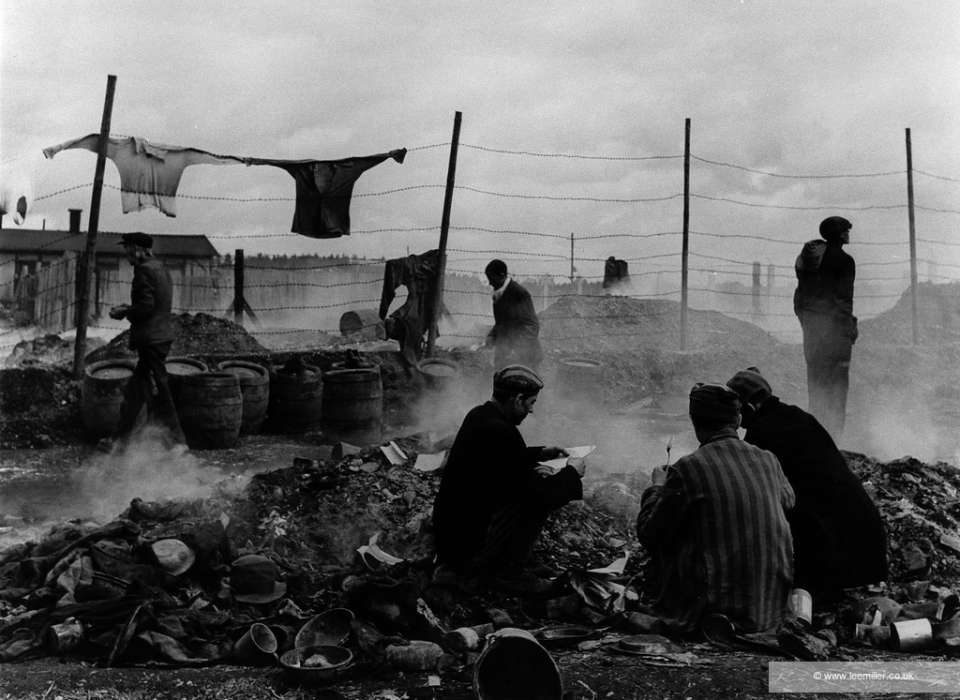
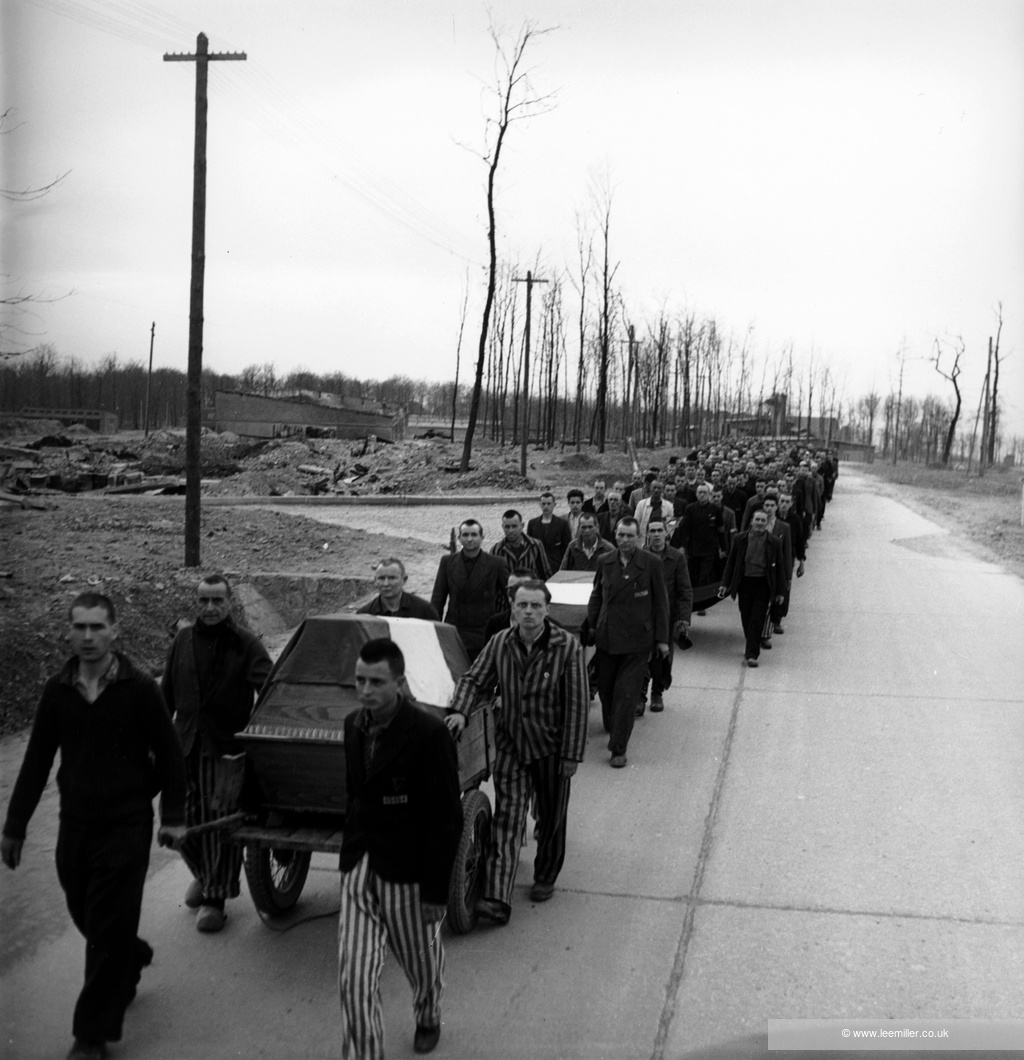
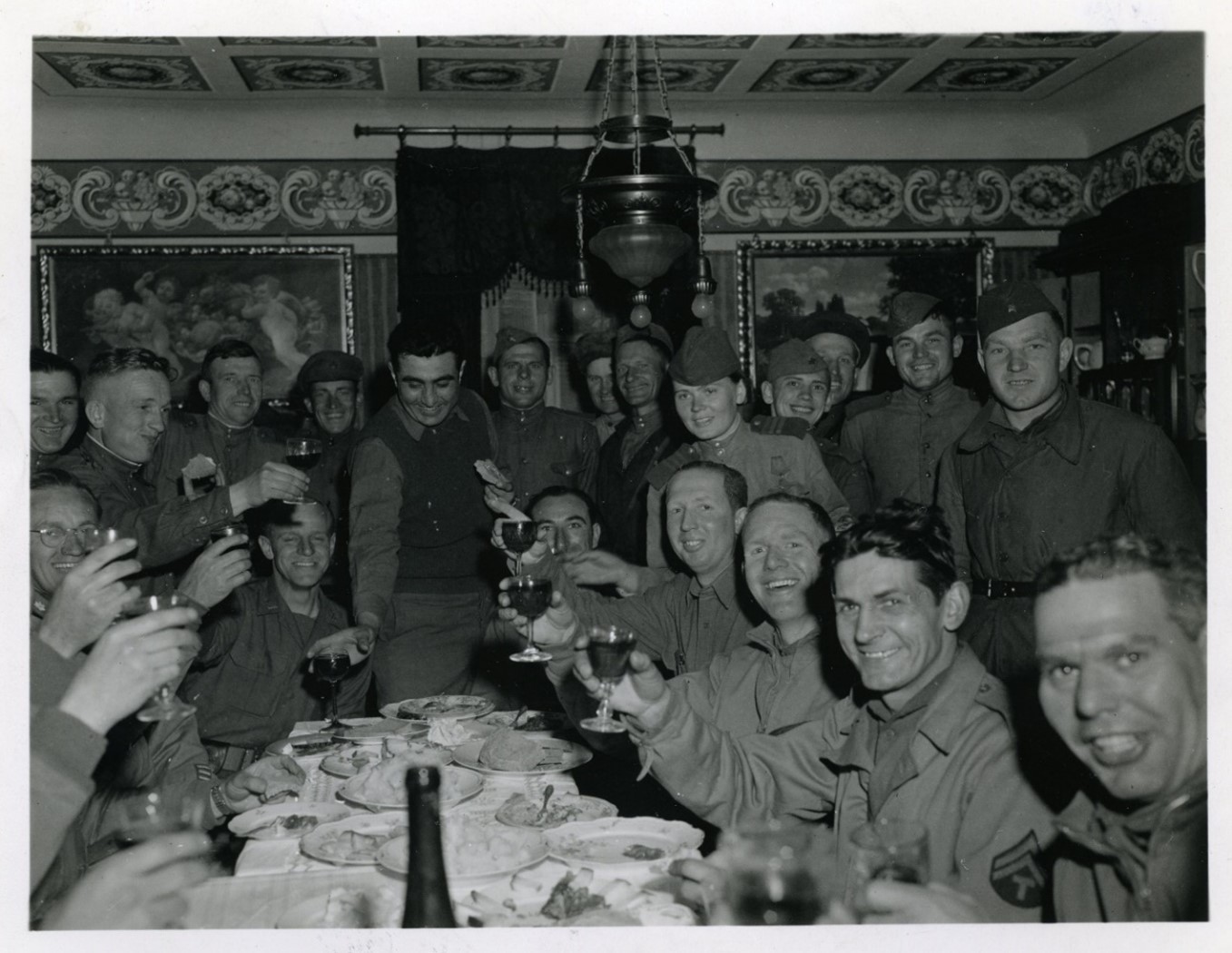
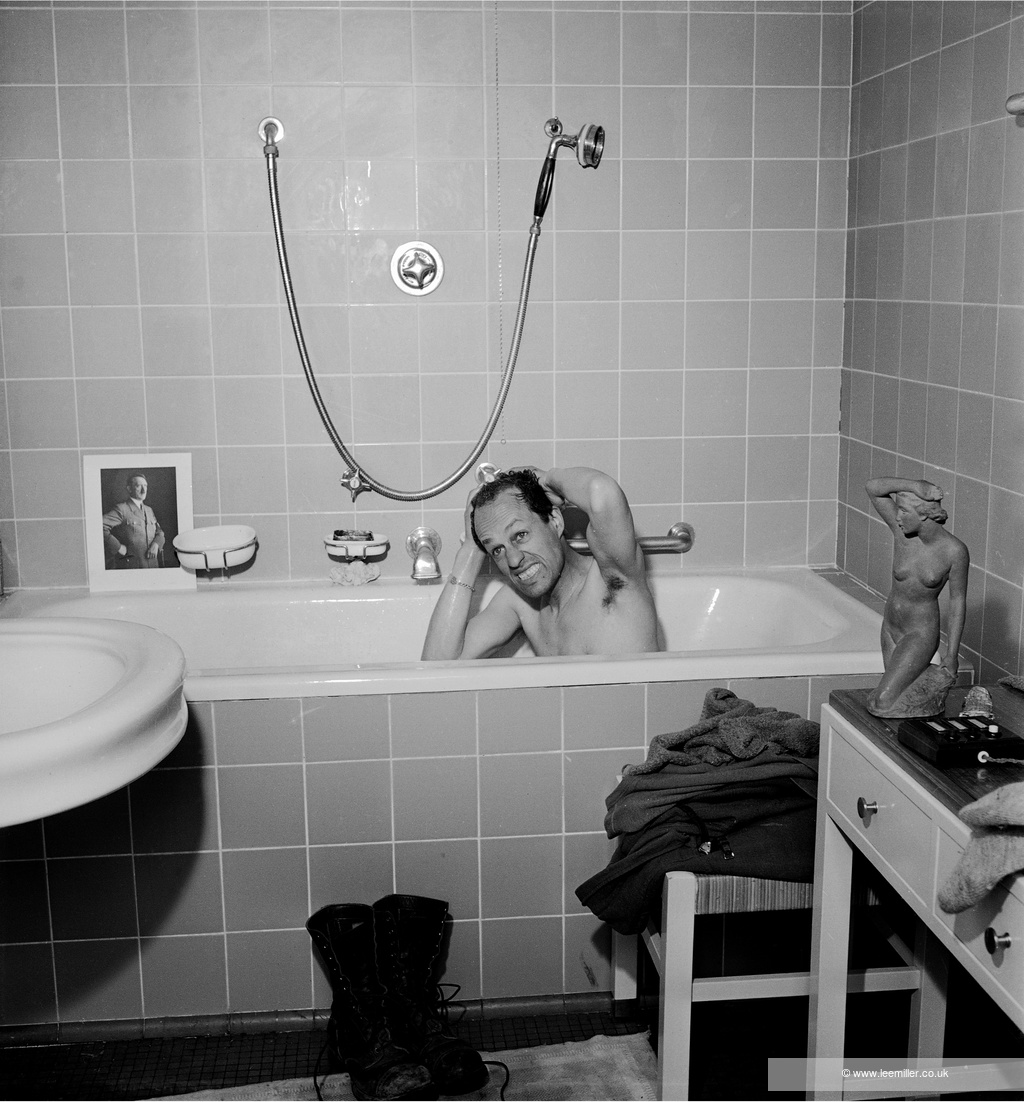
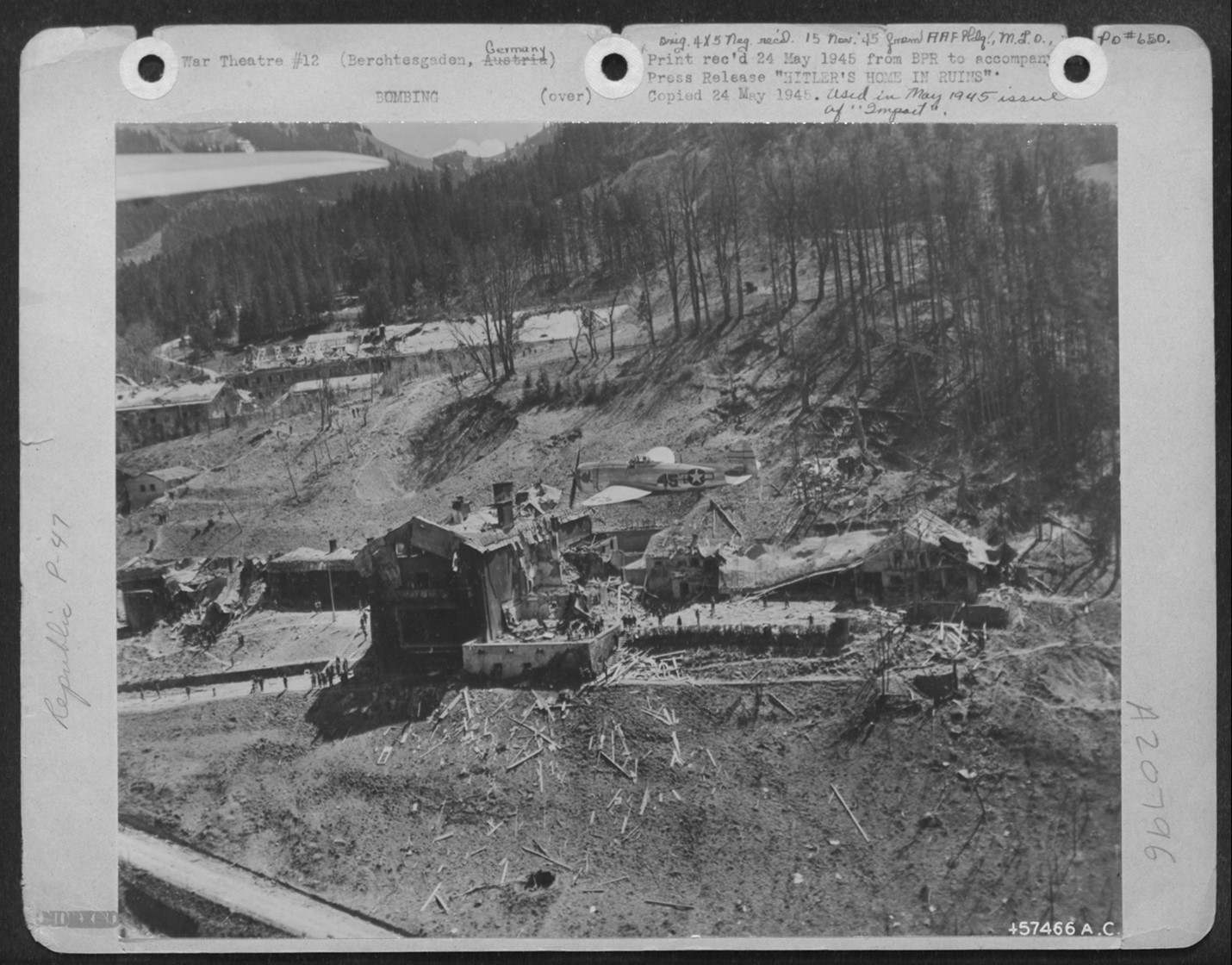
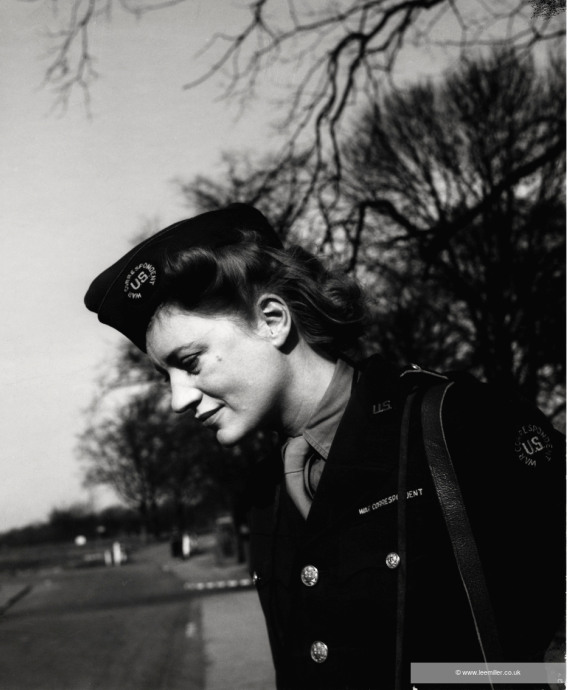
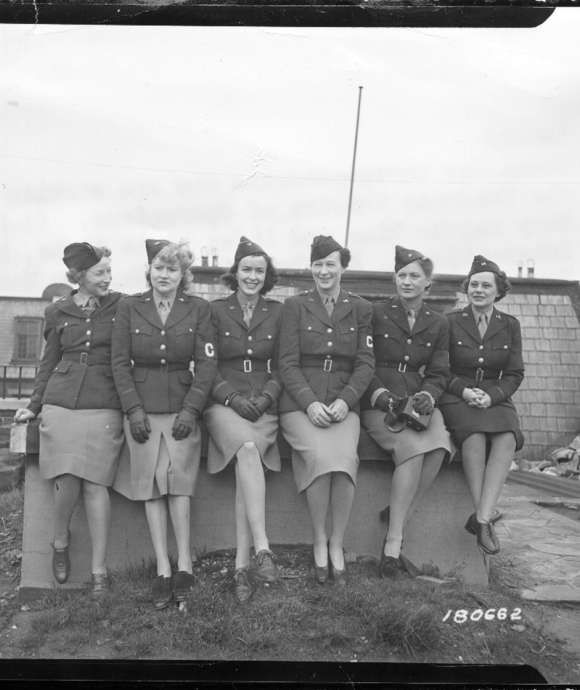
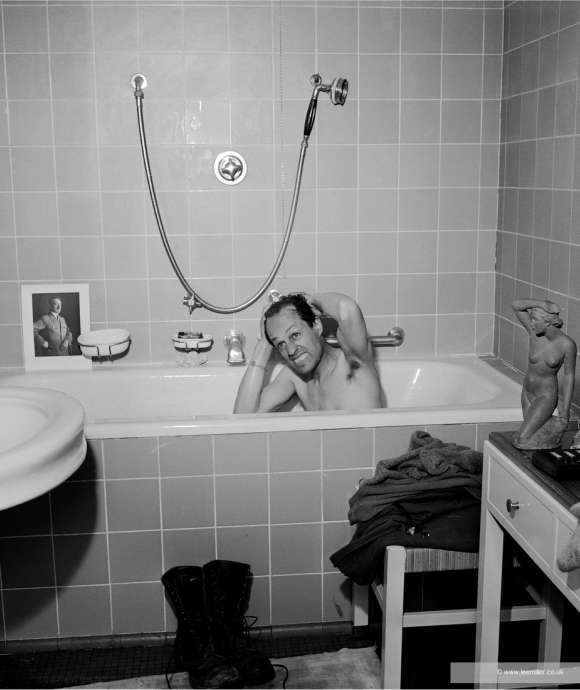
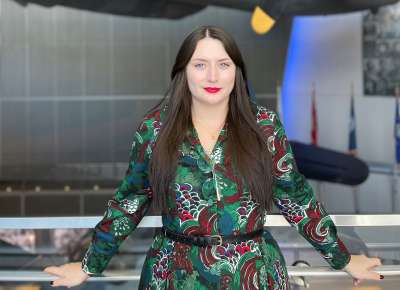
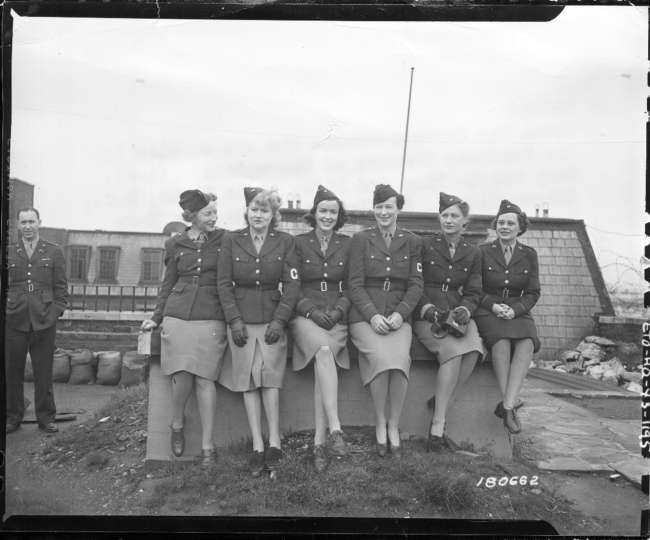
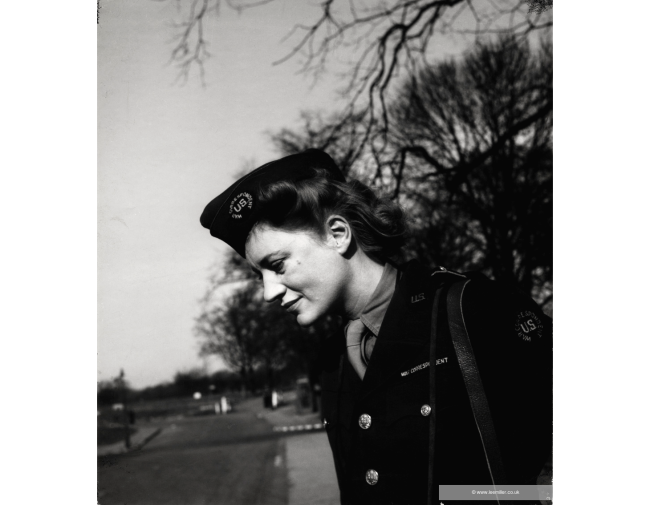
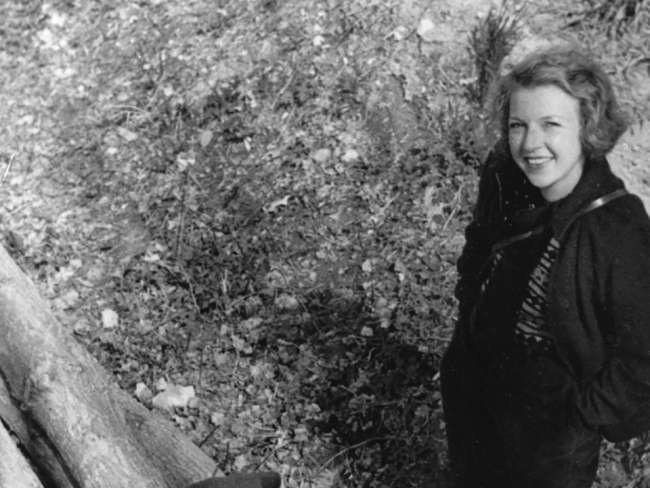



![Max Fuchs, New York City cantor, sings as Rabbi Sydney [sic] Lefkowitz, Richmond, VA, conducts the first Jewish services from Germany.](/sites/default/files/styles/max_650x650/public/2025-10/image1.jpg)



